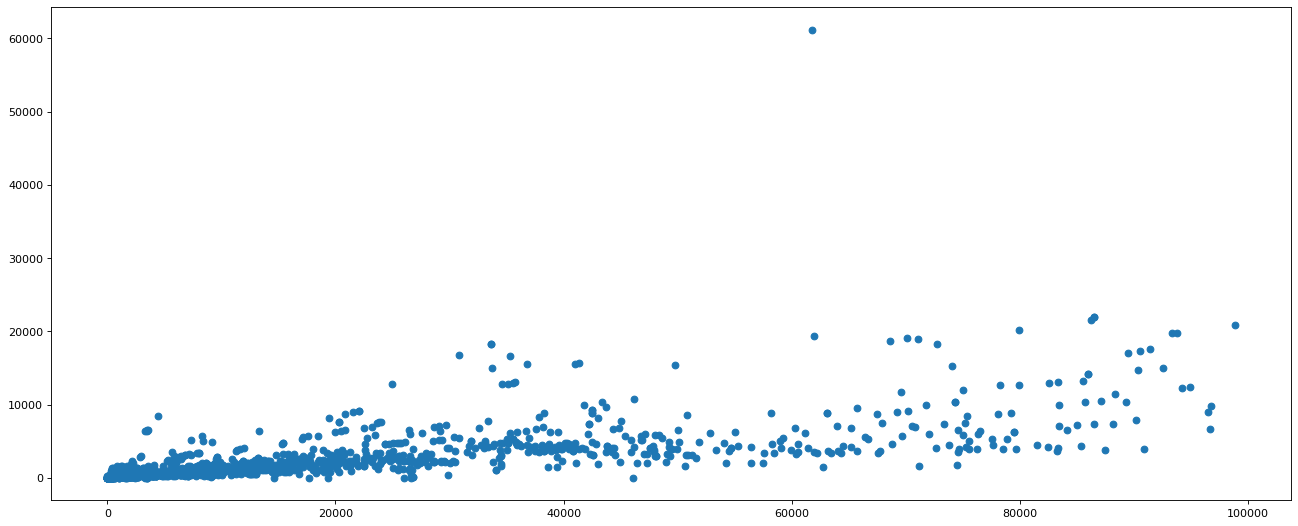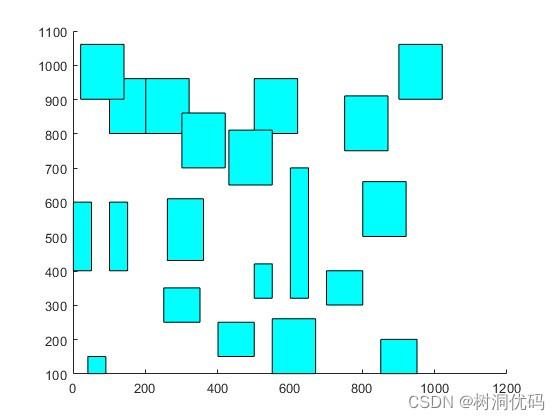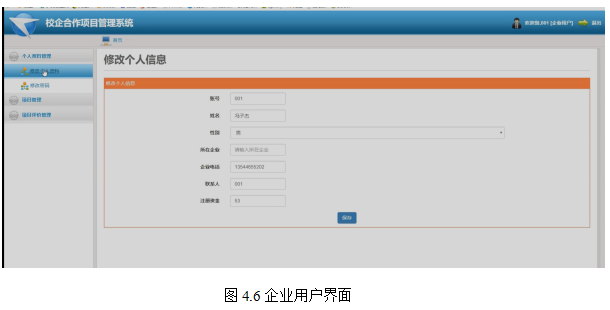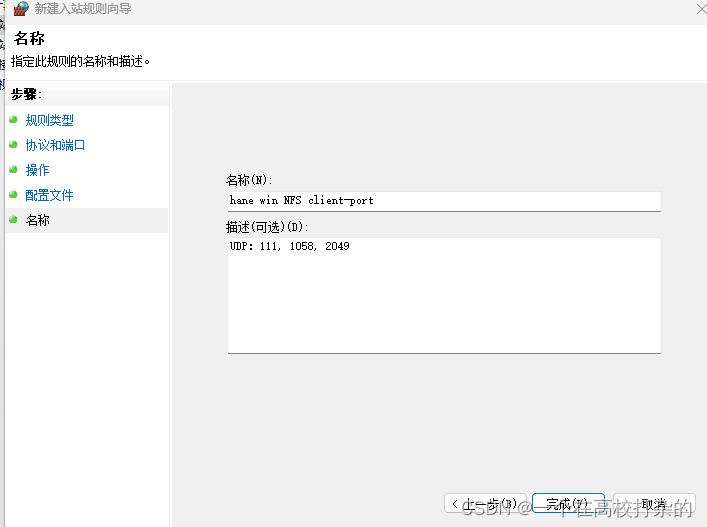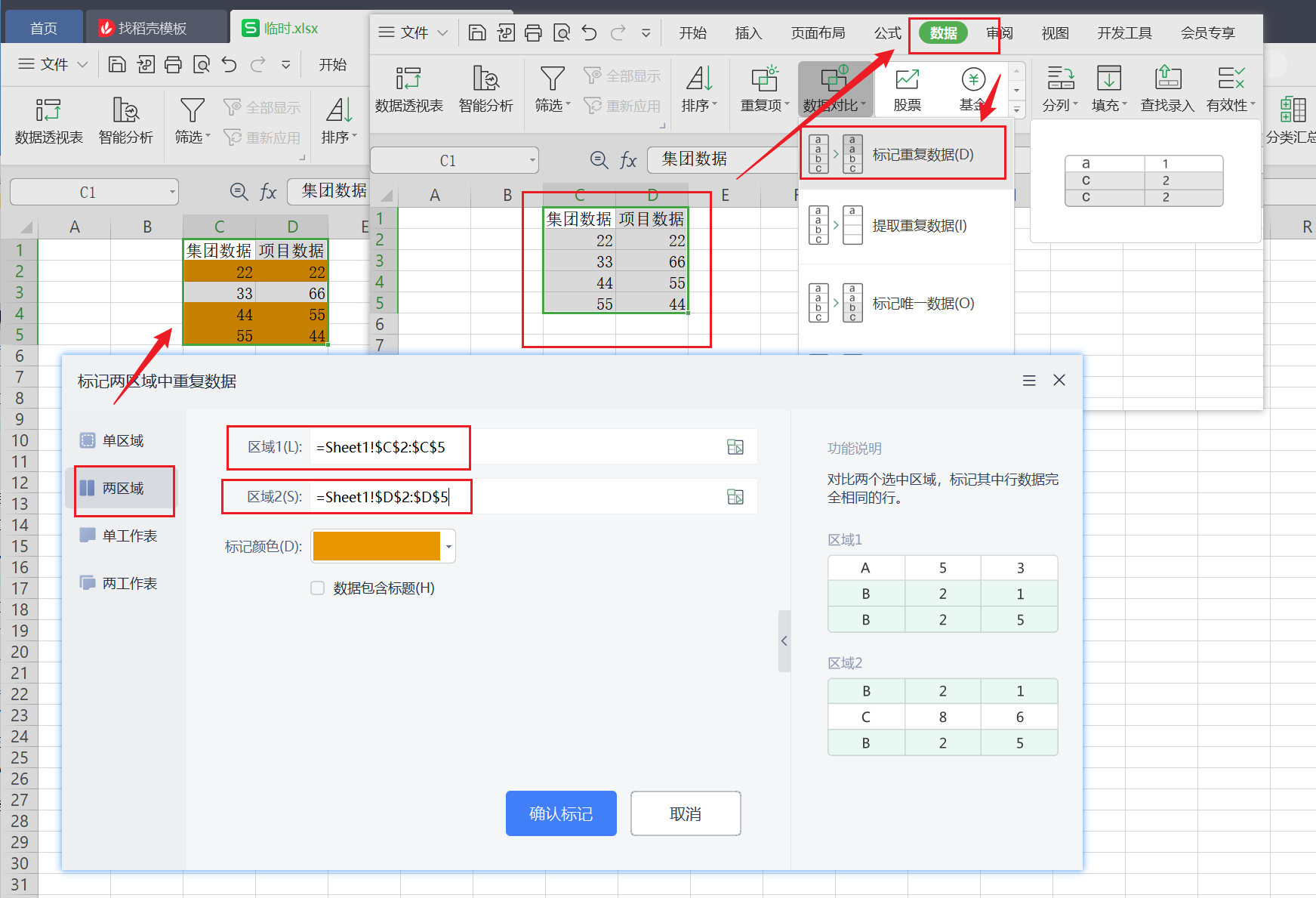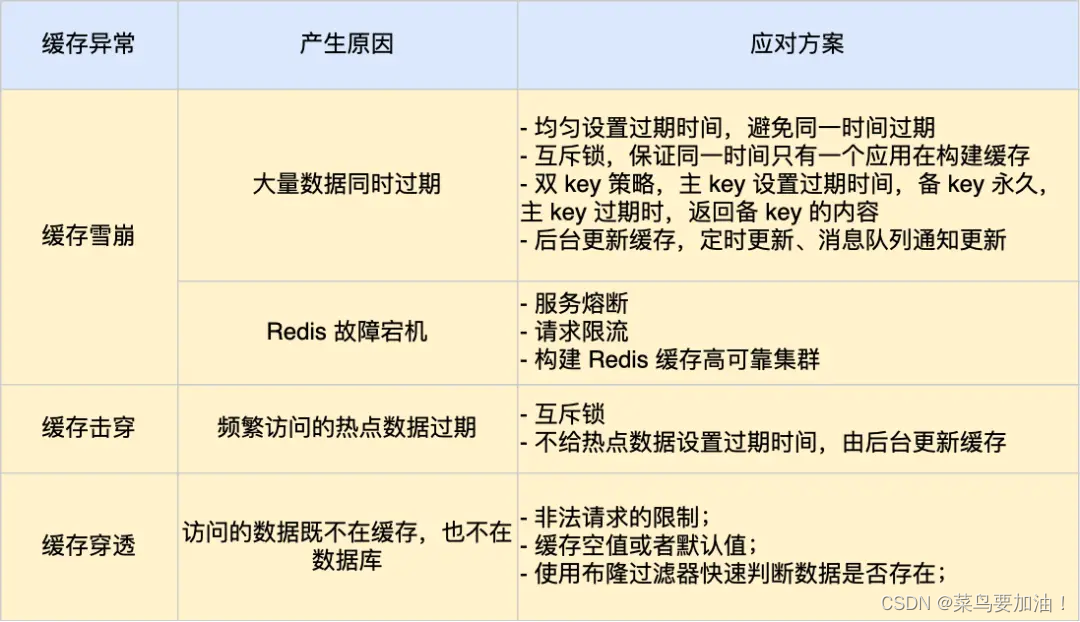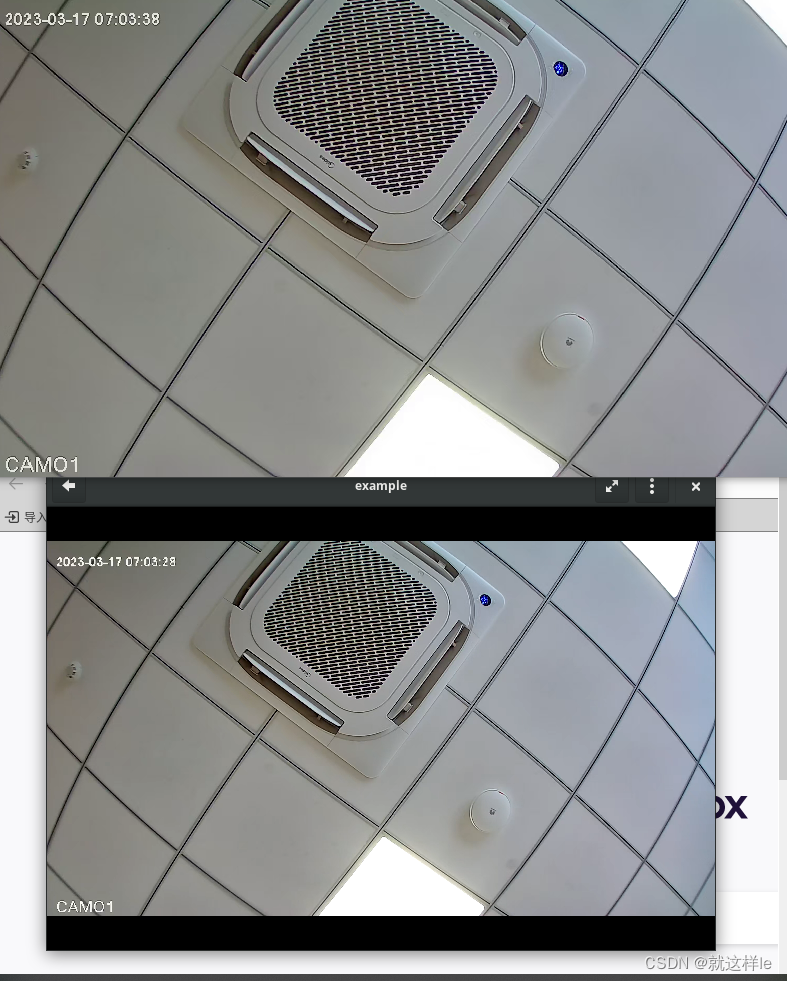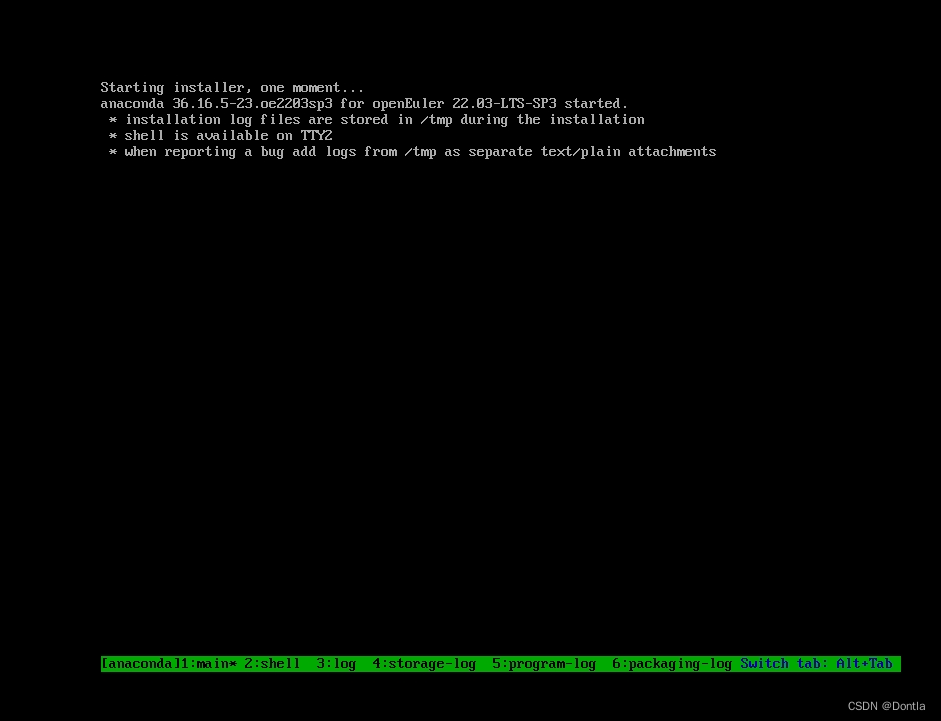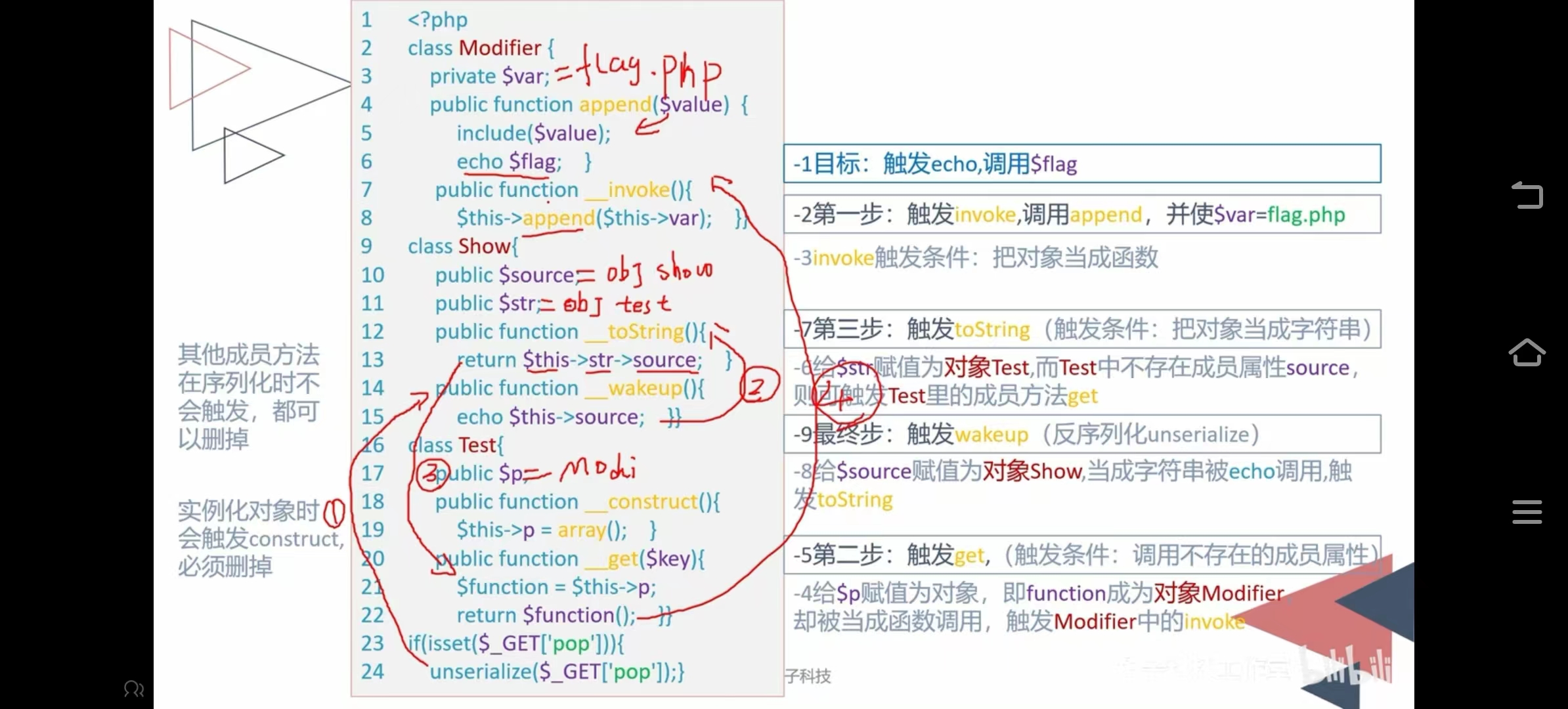numpy数据操作
读取数据
# numpy读取数据
'''
np.loadtxt(
fname, 文件、字符串或产生器, 也可以是压缩文件
dtype=np.float, 数据类型, 可选, 即确认csv的字符串以什么数据类型读入数组中, 默认为np.float
delimiter=None, 分割读取的字符串, 默认是空格, 读取csv时通常改为空格
skiprows=0, 跳过前x行, 一般跳过第一行表头
usecols=None, 读取指定的列, 索引, 元组类型
unpack=False 如果True, 读入属性将分别写入不同数组变量, Flase读入数据只写入一个数组变量, 默认False
)
'''
'\nnp.loadtxt(\n fname, 文件、字符串或产生器, 也可以是压缩文件\n dtype=np.float, 数据类型, 可选, 即确认csv的字符串以什么数据类型读入数组中, 默认为np.float\n delimiter=None, 分割读取的字符串, 默认是空格, 读取csv时通常改为空格\n skiprows=0, 跳过前x行, 一般跳过第一行表头\n usecols=None, 读取指定的列, 索引, 元组类型\n unpack=False 如果True, 读入属性将分别写入不同数组变量, Flase读入数据只写入一个数组变量, 默认False\n )\n'
import numpy as np
us_file_path = "./youtube_video_data/US_video_data_numbers.csv"
uk_file_path = "./youtube_video_data/GB_video_data_numbers.csv"
t1 = np.loadtxt(us_file_path, dtype="int", delimiter=",")
print(t1, '\n')
# 从结果可以看出unpack的效果是对读取结果进行转置
t2 = np.loadtxt(us_file_path, dtype="int", delimiter=",", unpack=True)
print(t2)
[[4394029 320053 5931 46245]
[7860119 185853 26679 0]
[5845909 576597 39774 170708]
...
[ 142463 4231 148 279]
[2162240 41032 1384 4737]
[ 515000 34727 195 4722]]
[[4394029 7860119 5845909 ... 142463 2162240 515000]
[ 320053 185853 576597 ... 4231 41032 34727]
[ 5931 26679 39774 ... 148 1384 195]
[ 46245 0 170708 ... 279 4737 4722]]
# 转置的两种方法
t1 = np.array([
[0, 1, 2, 3],
[4, 5, 6, 7],
[8, 9, 10, 11]
])
t1 = t1.transpose()
print(t1, '\n')
t2 = np.array([
[0, 1, 2, 3],
[4, 5, 6, 7],
[8, 9, 10, 11]
])
t2 = t2.swapaxes(1, 0)
print(t2)
[[ 0 4 8]
[ 1 5 9]
[ 2 6 10]
[ 3 7 11]]
[[ 0 4 8]
[ 1 5 9]
[ 2 6 10]
[ 3 7 11]]
索引和切片
t1 = np.loadtxt(us_file_path, dtype="int", delimiter=",")
print(t1)
print("*"*50)
# 取第3行
print(t1[2])
# 等价于print(t1[2, :])
print("*"*50)
# 取连续的多行
print(t1[2:])
# 等价于print(t1[2:, :])
print("*"*50)
# 取不连续的多行
print(t1[[2, 8, 10]])
# 等价于print(t1[[2, 8, 10], :])
[[4394029 320053 5931 46245]
[7860119 185853 26679 0]
[5845909 576597 39774 170708]
...
[ 142463 4231 148 279]
[2162240 41032 1384 4737]
[ 515000 34727 195 4722]]
**************************************************
[5845909 576597 39774 170708]
**************************************************
[[5845909 576597 39774 170708]
[2642103 24975 4542 12829]
[1168130 96666 568 6666]
...
[ 142463 4231 148 279]
[2162240 41032 1384 4737]
[ 515000 34727 195 4722]]
**************************************************
[[5845909 576597 39774 170708]
[1338533 69687 678 5643]
[ 859289 34485 726 1914]]
print(t1)
print("*"*50)
# 取第0列
print(t1[:,0])
print("*"*50)
# 取连续多列
print(t1[:, 2:])
print("*"*50)
# 取不连续多列
print(t1[:, [0, 2]])
print("*"*50)
# 取特定行列的值, 取第3行第4列的值
print(t1[2, 3], type(t1[2, 3]))
print("*"*50)
# 取多行多列, 取第3-5行, 第2-4列的结果, 左闭右开区间
print(t1[2:5, 1:4])
print("*"*50)
# 取不相连的多个点
# [横坐标列表, 纵坐标列表]
print(t1[[0, 2], [0, 3]])
[[4394029 320053 5931 46245]
[7860119 185853 26679 0]
[5845909 576597 39774 170708]
...
[ 142463 4231 148 279]
[2162240 41032 1384 4737]
[ 515000 34727 195 4722]]
**************************************************
[4394029 7860119 5845909 ... 142463 2162240 515000]
**************************************************
[[ 5931 46245]
[ 26679 0]
[ 39774 170708]
...
[ 148 279]
[ 1384 4737]
[ 195 4722]]
**************************************************
[[4394029 5931]
[7860119 26679]
[5845909 39774]
...
[ 142463 148]
[2162240 1384]
[ 515000 195]]
**************************************************
170708 <class 'numpy.int64'>
**************************************************
[[576597 39774 170708]
[ 24975 4542 12829]
[ 96666 568 6666]]
**************************************************
[4394029 170708]
# 布尔索引, 条件筛选
t2 = np.arange(24).reshape((4, 6))
print(t2)
print("*"*50)
print(t2<10)
print("*"*50)
t2[t2<10] = 3
print(t2)
print("*"*50)
print(t2[t2>20])
[[ 0 1 2 3 4 5]
[ 6 7 8 9 10 11]
[12 13 14 15 16 17]
[18 19 20 21 22 23]]
**************************************************
[[ True True True True True True]
[ True True True True False False]
[False False False False False False]
[False False False False False False]]
**************************************************
[[ 3 3 3 3 3 3]
[ 3 3 3 3 10 11]
[12 13 14 15 16 17]
[18 19 20 21 22 23]]
**************************************************
[21 22 23]
t3 = np.arange(24).reshape((4, 6))
# 想把t中小于10的数字替换为0, 把大于10的替换为10
# 三元运算符
t3 = np.where(t3<10, 0, 10)
print(t2)
[[ 3 3 3 3 3 3]
[ 3 3 3 3 10 11]
[12 13 14 15 16 17]
[18 19 20 21 22 23]]
# 想把t中小于10的数字替换为10, 把大于20的替换为20
# 如果用bool三元操作需要两行
# 可以使用clip裁剪操作, 即裁剪掉高的那部分和低的那部分, 留下中间的部分
t4 = np.arange(24).reshape((4, 6))
print(t4)
print("*"*50)
t4 = t4.clip(10)
print(t4)
[[ 0 1 2 3 4 5]
[ 6 7 8 9 10 11]
[12 13 14 15 16 17]
[18 19 20 21 22 23]]
**************************************************
[[10 10 10 10 10 10]
[10 10 10 10 10 11]
[12 13 14 15 16 17]
[18 19 20 21 22 23]]
英国和美国各自youtube1000的数据结合之前的matplotlib绘制出各自的评论数量的直方图
import numpy as np
from matplotlib import pyplot as plt
us_file_path = "./youtube_video_data/US_video_data_numbers.csv"
uk_file_path = "./youtube_video_data/GB_video_data_numbers.csv"
t_us = np.loadtxt(us_file_path, dtype="int", delimiter=",")
# 取评论的数据(最后一列)
t_us_comments = t_us[:, -1]
# 计算极差
print(t_us_comments.max(), t_us_comments.min())
# 设置组距并计算组数
d = 10000
bin_nums = (t_us_comments.max() - t_us_comments.min()) // d
plt.figure(figsize=(20, 8), dpi=80)
plt.hist(t_us_comments, bin_nums)
plt.show()
582624 0
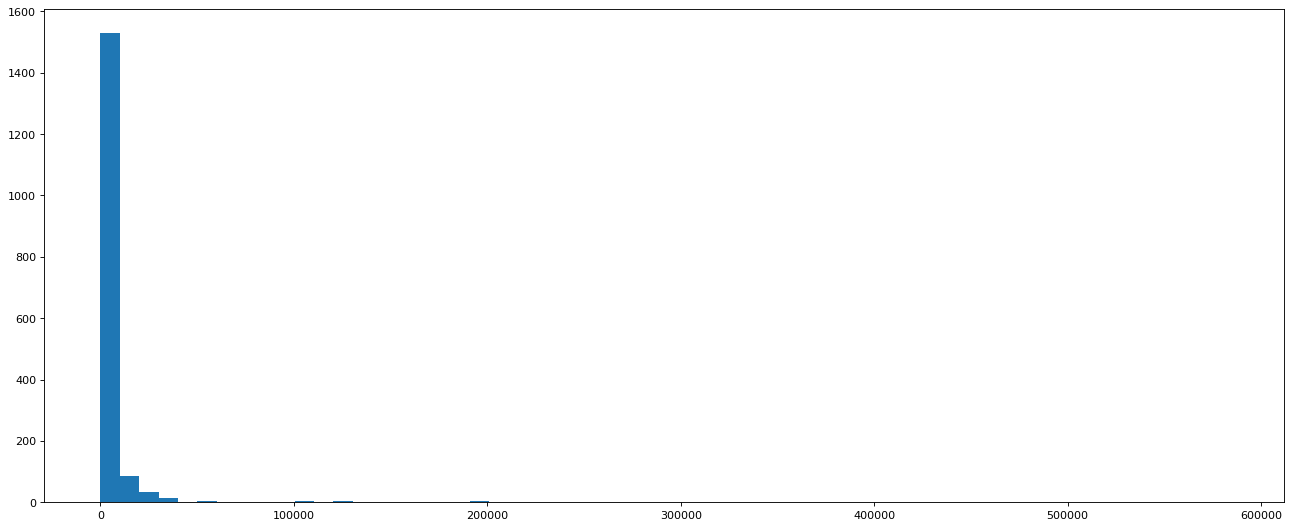
# 可以看到后面的数据比较小, 可以只选择比5000小的数据
t_us_comments = t_us_comments[t_us_comments<5000]
d = 20
bin_nums = (t_us_comments.max() - t_us_comments.min()) // d
plt.figure(figsize=(20, 8), dpi=80)
plt.hist(t_us_comments, bin_nums)
plt.show()
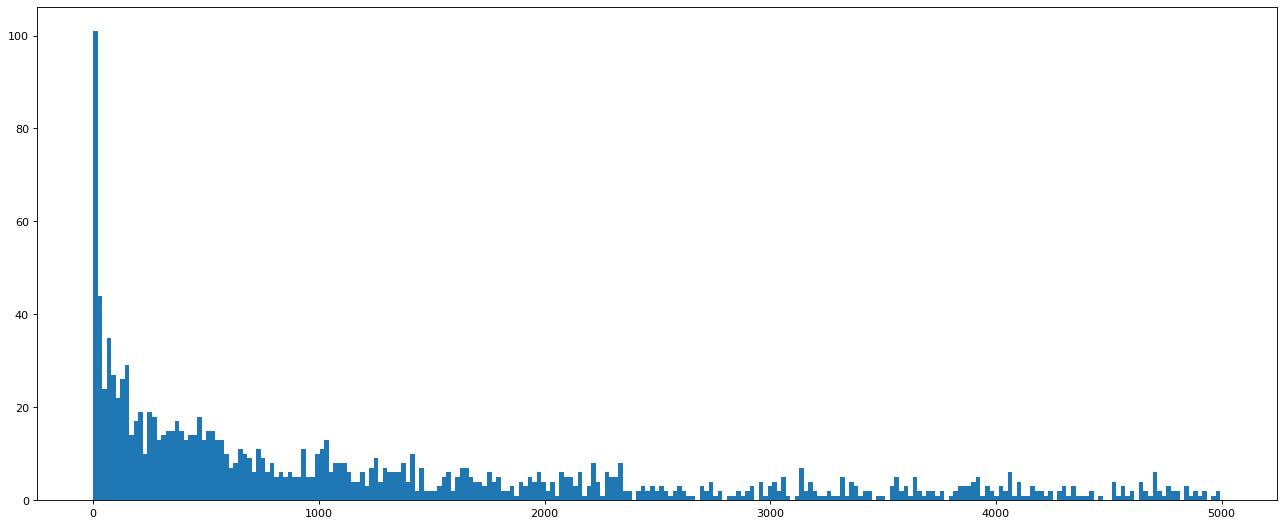
希望了解英国的youtube中视频的评论数和喜欢数的关系,应该如何绘制改图
# 表示关系, 可以绘制散点图
uk_file_path = "./youtube_video_data/GB_video_data_numbers.csv"
t_uk = np.loadtxt(us_file_path, dtype="int", delimiter=",")
t_uk_comment = t_uk[:, 3]
t_uk_like = t_uk[:, 1]
plt.figure(figsize=(20, 8), dpi=80)
plt.scatter(t_uk_like, t_uk_comment)
plt.show()
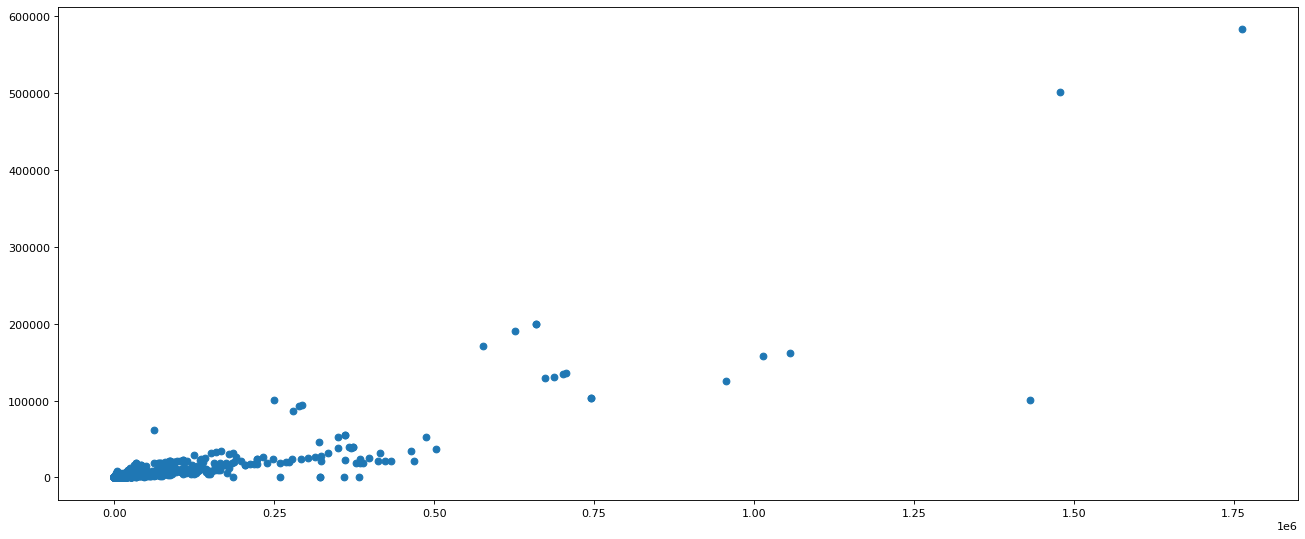
# 可以看出喜欢数量大于5e5的比较少
# 需要直接对t_uk进行选择, 而不是对like数进行选择
t_uk = t_uk[t_uk[:,1]<500000]
t_uk_comment = t_uk[:, 3]
t_uk_like = t_uk[:, 1]
plt.figure(figsize=(20, 8), dpi=80)
plt.scatter(t_uk_like, t_uk_comment)
plt.show()
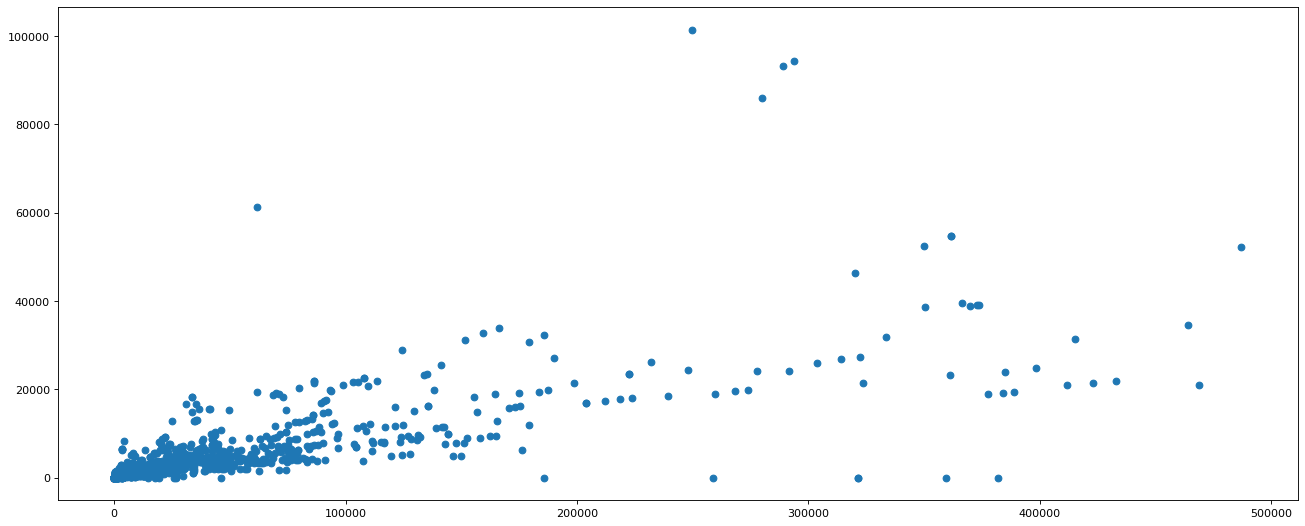
# 可以看到小于1e5的很密集
t_uk = t_uk[t_uk[:,1]<100000]
t_uk_comment = t_uk[:, 3]
t_uk_like = t_uk[:, 1]
plt.figure(figsize=(20, 8), dpi=80)
plt.scatter(t_uk_like, t_uk_comment)
plt.show()
